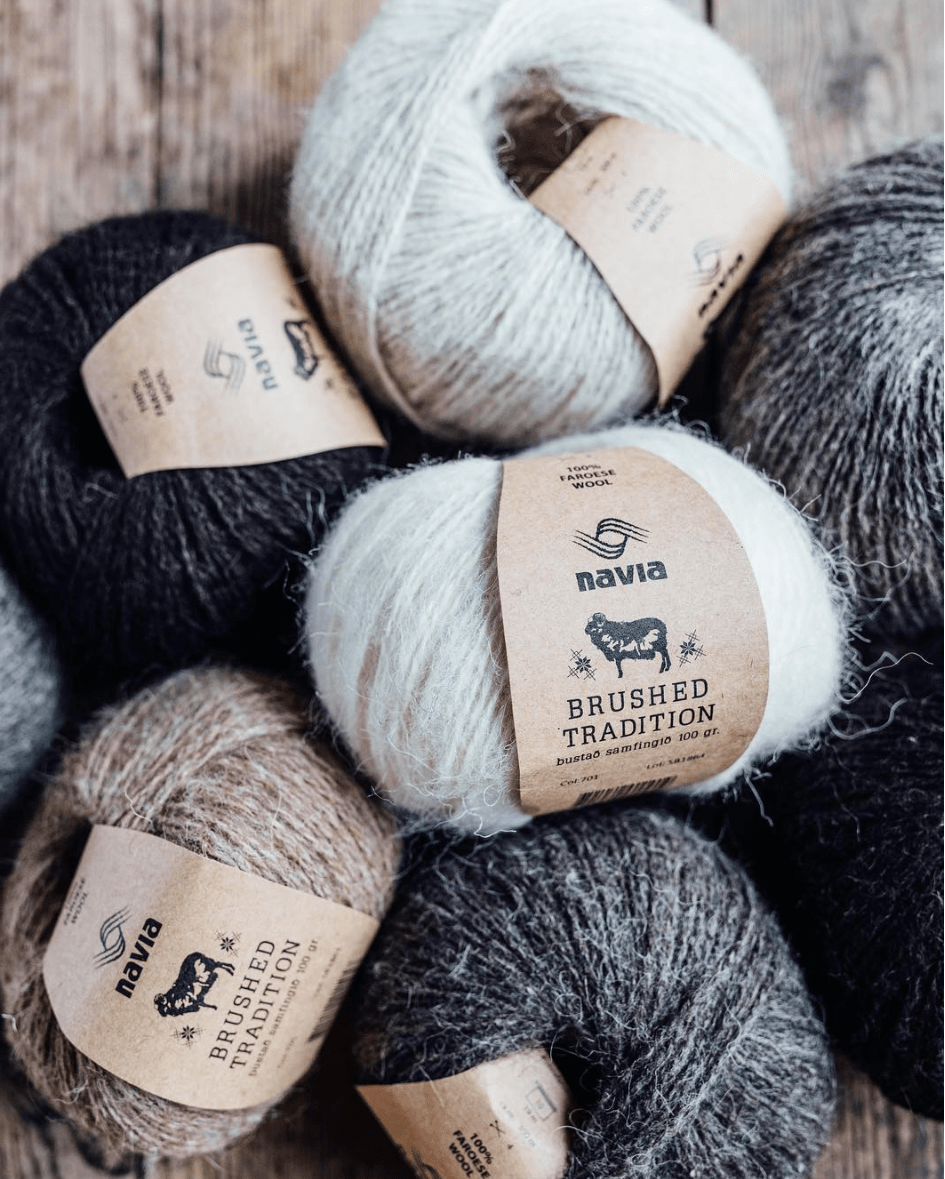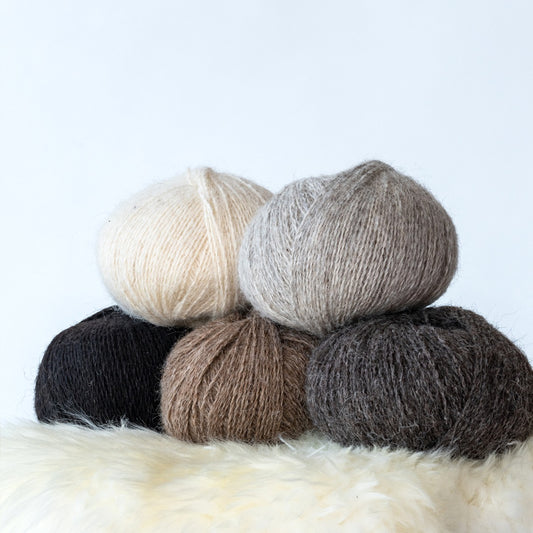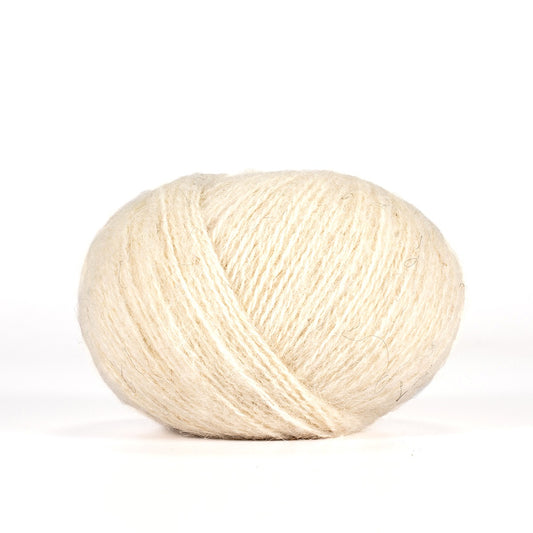Working with
Fairmount Fibers on the
Collaboration Collection was a really wonderful experience, buoyed by the fact that we have all known one another for going on fifteen years. While we know quite a bit about one another, we thought it would be really fun to introduce (or in many cases, reintroduce) ourselves to one another's customer base via an interview.
The result is a two part interview series, the first was an interview Kate did with Lisa R. Myers from Fairmount Fibers. Lisa's interview with Kate is below. Enjoy!
Lisa R. Myers: Tell me as if I don’t know: what’s the Kelbourne Woolens origin story?
Kate Gagnon Osborn: Courtney and I met working at your shop - Rosie’s Yarn Cellar - in Philadelphia. We both have educational backgrounds in fine art with a textiles concentration and I was in grad school to get my masters degree in textile design while Courtney was managing the shop. In early ‘08, the opportunity to distribute a small yarn brand was presented to you by our local sales rep, Antonia. As you had just started Fairmount, it wasn’t something you could pursue, so you brought the idea to Courtney and, as they say, the rest is history! Fast forward 9 years and we developed our own yarn line under the Kelbourne Woolens brand. We currently distribute our own line, BC Garn, Navia, and Soak, and are in the process of moving our warehouse to a larger space in the Mt. Airy section of Philadelphia.

Kate and Courtney in 2015
LRM: You asked me about focusing solely on Manos del Uruguay yarns and I’m curious to know more about life on the other side of the fence: What’s it like to handle multiple yarn lines as a distributor?
KGO: Chaotic but fun! The nature of the distribution means we don’t have as much involvement in the yarn and color development or pattern support of the lines, but we work closely with the owners of all three brands, which is really rewarding. We carefully selected BC Garn and Navia due to the environmental and social practices of both brands; most
BC Garn yarns are GOTS certified, and
Navia, based in the
Faroe Islands, began as an effort to reduce wool waste among the vast quantity of sheep on the islands. Additionally, having other brands we distribute allows us to make yarns that don’t “fit” into the Kelbourne brand available to the U.S. market, which is exciting and rewarding.
LRM: How have your backgrounds as LYS staffers, knitters, and designers influenced your approach to developing Kelbourne Woolens yarns? What have your priorities been re: fiber source and content, yarn weights, colorways, and so on? Is there a type of yarn you dream of selling one day?
KGO: Working at a LYS continues to inform so much of what we do and how we approach development. Every single yarn must pass a variety of tests specific to their placement in a shop; put-up, yarn palette, price point, spelling and pronunciation in color names, etc, all play a role in creating a yarn that is a success for the end-user and LYS owner.
For a long time, we tossed around the idea of having our tag line for the brand be It’s just yarn, as our goal for Kelbourne has been to design yarn for the sake of yarn; not too fussy, complicated, or overwrought. We’re in it for the long haul, and so instead of chasing the next big trend, we design yarns with the goals of longevity, quality, and consistency.
The focus of our line is natural fibers and wool plays a large role in most of the blends. We pay close attention to the mills we work with and how they treat their employees and animals. Our warehouse is
GOTS certified, and it is important that the products we sell have a high standard for environmental and human/animal welfare as well. So far, every yarn we've wanted to create, we’ve found a way to make it happen. We’re currently swatching about 10 different cotton blends, and it is always a goal to make more cellulose yarns like Mojave that are as delightful to knit and crochet as they are to wear.
LRM: You have a lot more direct contact with knitters than I do. Any particularly interesting trends you’re noticing lately?
KGO: I am seeing a lot more texture right now, which seems to be a step away from the colorwork yokes that have been so popular over the last few years. It is also nice to see alternative constructions to top down yokes or raglans having their moment. Crochet garments seem to be gaining in popularity as well, which is great to see!
LRM: Let’s talk about the Collaboration Collection design process for the patterns you and Courtney developed. You designed Bascom and Jemison, and Courtney designed Lamarr. Did you have ideas and pattern inspirations ready to go? Did your designs take an unexpected turn at any point?
KGO: Jemison is an update/remake of a sweater I designed about six years ago. I wear the sample all the time, so I wanted to tweak it a little for a bulky weight. The process for that one was pretty straightforward, with the majority of the design being in the raglan shaping; compound decreases and short rows shape the front, back, and sleeves at different rates, which makes for a really nice fit.
For Bascom, vests are having a big moment, and they aren’t garments I have designed much in the past. The combination of textured stitch and gauge seemed perfect for a layering piece like a vest, and I am delighted with the end result. The only unexpected turn with Bascom was that I originally intended on knitting it in pieces, but as I worked the ribbing at the hems I thought joining and having a faux slipped stitch seam would work better for a more streamlined and less-bulky fit.
For Courtney, Lamarr was an interesting design challenge because she really wanted a sweater that would do two things simultaneously: It needed to be fashionably cute and easy to wear on a lot of different body types, and also be relatively simple to design and knit. She loves designing, but running a business and having young kids presents its challenges with time. The dolman style can be knit in one piece from cuff to cuff, and doesn’t require a ton of messing around with super complex techniques or too much fussy shaping. The design can also be modified for the wearer’s desired fit, and the deep ribbing on the body makes it a more functional garment.
We love sweaters like these, because you can knit one that’s oversized and casual, or a smaller version with a shorter hem ribbing for a cropped look. It’s less about “What size am I supposed to make?” and more about “How do I want this to fit?" The biggest challenge designing Lamarr was getting the neck shaping and placement just right, because the sleeves and body are, functionally, the same. Courtney didn’t really consider this until she had worked through the sleeve calculations, which required going back to the drawing board and thinking, “Sleeves plus body!”
LRM: Did Germantown Bulky and Cardo's particular features – fiber content, stitch definition, hand at various gauges – affect your design, swatching, and testing processes? (Courtney should tell the story about schooling me for not blocking my swatch!)
KGO: Hahaha. Not to throw you under the bus or anything, but you know you always have to block your swatches! I also would love to take a poll on knitters’ preference to block before or after seaming. (For the record, I am stubbornly on team Block Before.)
I think Cardo and Germantown Bulky are such excellent examples of how two 100% wool bulky weight yarns can be quite different but still produce really beautiful end results. Cardo is definitely bouncier and squishier than the Germantown Bulky, and changed more after blocking. It also was a little more willing to function at a wider variety of gauges, so a stitch pattern in a looser gauge that was a winner in Cardo sometimes didn’t work as well in the Germantown. And we haven’t worked with hand-dyed yarns for a while so adjusting our approach to the hand-made qualities of Cardo was a fun additional element to the process!
View the full Collaboration Collection
We hope you enjoyed this Interview series! Did you miss Kate's interview of Lisa from Fairmount? Check it out
here!
 Kate and Courtney in 2015
Kate and Courtney in 2015 Navia Brushed Tradition. Image © Navia
Navia Brushed Tradition. Image © Navia Bascom / Kate Gagnon Osborn
Bascom / Kate Gagnon Osborn Jemison / Kate Gagnon Osborn
Jemison / Kate Gagnon Osborn Lamarr / Courtney Kelley
Lamarr / Courtney Kelley

